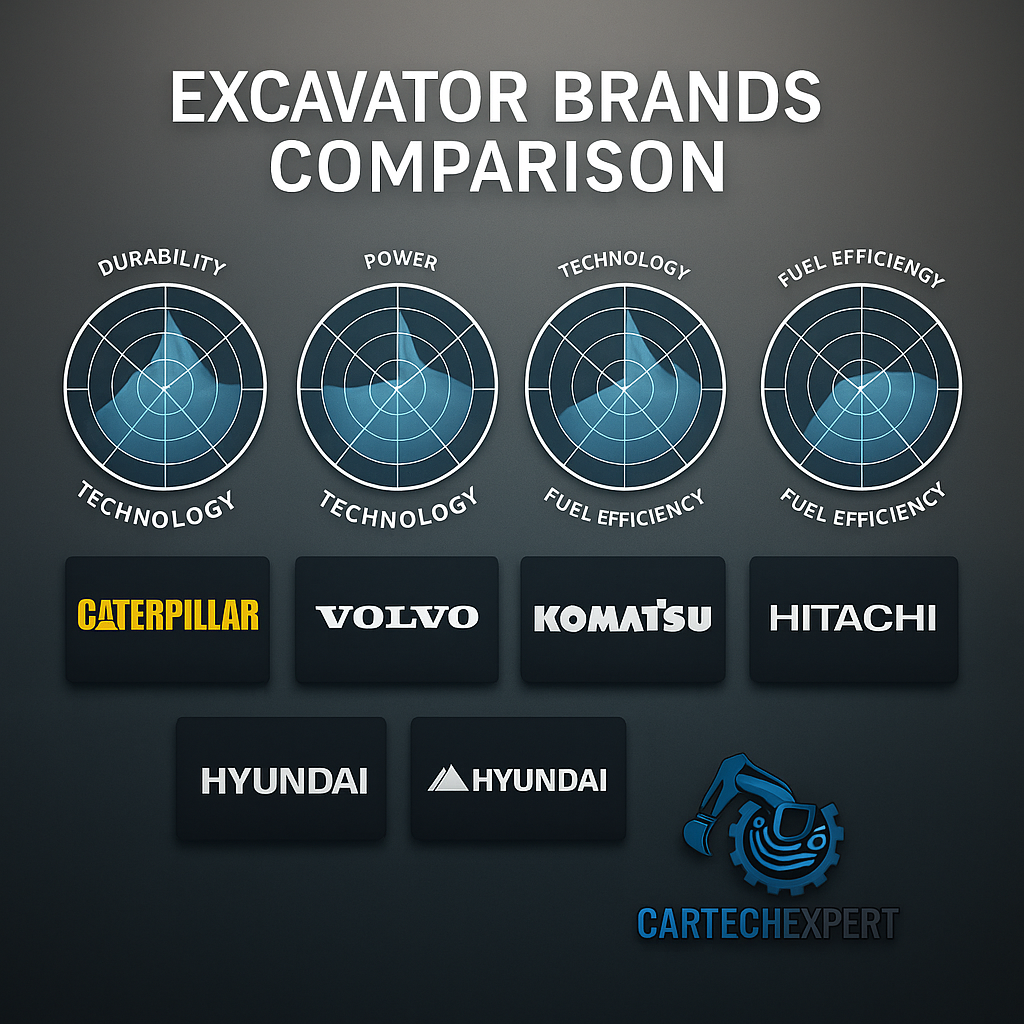Physical Address
Arthur Avenue , BrookField , ILLINOIS , 60513 , United State

You’ve seen how diagnostic tools have come a long way — what used to be basic fault-code readers are now fully featured systems with live data, cloud integration, and AI-enhanced diagnostics. In 2025, the benchmark for diagnostic tools is higher. You’ll want speed, accuracy, brand coverage, support, licensing flexibility, and reliability in harsh environments.
This guide helps you sift through options. You’ll get the criteria that matter, a comparison of leading brands, feature deep dives, and tips to pick a tool that matches your shop’s reality (not just flashy specs).
Before comparing brands, define what you need. These are the criteria you should evaluate:
CAT tools are known for deep integration with Caterpillar machines. Diagnostic software offers comprehensive fault analysis, component reprogramming, calibration, and parameter tuning. Their coverage tends to be among the best for CAT’s own equipment. Licenses are typically more expensive, support is good, and the hardware is rugged.
Komatsu’s diagnostic suite includes remote monitoring through KOMTRAX, calibration tools, and proprietary modules. Often praised for durability in heavy-duty mining and construction environments. The learning curve may be steeper and pricing somewhat less flexible than universal tools.
Volvo offers robust telematics + diagnostics. Their toolset is strong in monitoring, service alerting, and calibration, especially for Volvo brand. UI tends to be cleaner than older tools; support is generally reliable. On mixed-brand fleets, you may need supplementary tools.
For shops that service many brands, multi-brand tools like Jaltest OHW offer coverage across dozens of manufacturers. They may not always match OEM depth for specialized calibrations, but they offer strong value, flexibility, and cost savings — especially when servicing multiple brands.
These vendors are improving rapidly. For example, John Deere’s diagnostic tools are strong in agricultural and construction overlap markets. Bosch and Snap-on often supply universal diagnostic hardware and adapters, which are useful when OEM options are not available on-site.
Let’s compare specific features across tools to see what really separates the good from the great.
| Feature | CAT ET / VisionLink | Komatsu Digital Tools | Volvo ActiveCare / VCADS | Multi-Brand (Jaltest, Snap-on, etc.) |
|---|---|---|---|---|
| Live sensor streaming | ✔ High fidelity, many sensor channels | ✔ Strong, slightly fewer channels | ✔ Very good, good UI filtering | ✔ Decent performance; UI sometimes less smooth |
| ECU calibration / programming | ✔ Full OEM calibrations | ✔ Many calibrations; some vendor-specific features | ✔ For Volvo machines only; others limited | ✗ Limited; some calibrations missing or generic |
| Model & brand coverage | CAT only | Komatsu only | Volvo only | Multi-brand (50+ OEMs) with varying depth |
| Remote diagnostic abilities | ✔ Strong, cloud-based | ✔ Good remote logging & alerting | ✔ Strong for Volvo; data dashboards good | ✔ Varies — good in some systems, weaker in others |
| Cost & licensing flexibility | High (OEM license, subscription plus hardware) | Moderate to high | High for Volvo OEM; moderate if limited to usage alerts | Better flexibility; lower cost per brand, modular add-ons |
When you invest in a diagnostic tool, it’s not just the specs — support, reliability, and ease of use matter. Ask these questions:
Several cost elements to consider beyond just the list price:
Here are some tools that balance performance and cost well in 2025:
To get the most from whichever tool you pick:
A: Multi-brand tools cover many OEMs — but depth (calibrations, firmware) can be limited. OEM tools generally give deeper access for their own brand.
A: Subscription can give you quicker updates and lower upfront cost, but over long term OEM perpetual licenses plus lower hardware costs may cost less. It depends on how often tools need updating.
A: Very — frequent updates mean better coverage of new machines and quicker fixes for software bugs. It’s part of your tool’s reliability.
A: Yes. Look for temperature rating, water/dust ingress protection, robust connectors/cables, and resistance to vibration.
Choosing the right diagnostic tool in 2025 is about balancing depth, brand coverage, cost, and support. Whether you go with OEM tools like CAT, Volvo, Komatsu, or pick a flexible multi-brand solution, what matters is choosing one that fits your workflow and priorities.
Want to see tool specs side-by-side, get recommendations for your fleet, or buy reliable diagnostic hardware? Visit store.cartechexpert.com to browse trusted kits, adapters, and software. For more in-depth guides, comparisons, and buyer’s checklists, go to CARTECHEXPERT.
CARTECHEXPERT — Experts in Heavy Equipment Diagnostics, Telematics, and Tool Strategy. We help workshops and fleet operators choose the right tools to spend less time diagnosing, and more time repairing.
